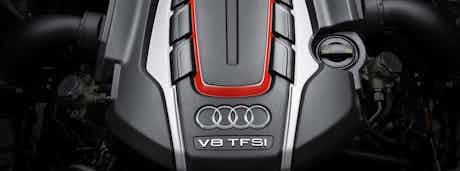What is cylinder deactivation?
November 17, 2014 by carwow staff

Buying a new car doesn’t have to be difficult – after all, that’s why we started carwow. But sometimes just choosing the equipment for your new wheels can be tough, thanks to indecipherable acronyms and new technologies.
To help, we’re here with a series of guides to help explain some of the more modern technologies that you might not have seen on a car. This week, we’re looking at cylinder deactivation – also known as cylinder on demand (or CoD).
Engines use fuel. Fuel costs money. Having to fill up the tank often is likely to make even the most zen motorist lose their temper. Manufacturers are spending a great deal of time and money to develop engines that use significantly less fuel for the amount of power they produce. One way to do this is through cylinder deactivation.

What is it?
Most engines consist of multiple cylinders (anywhere between two and sixteen) into which fuel and air is injected, then squeezed, then exploded to generate energy and forward motion. When a car is cruising or coasting, however, it only needs a fraction of its power so, to save fuel, modern engines can deactivate some of their cylinders effectively halving their size and power used.
How does cylinder deactivation work?
This explanation could easily run into the middle of next week so for simplicity’s sake we’ll look at the theory rather than different manufacturers’ methods of turning cylinders off.
Valves at the top of the cylinder open and shut in a specific pattern to precisely allow fuel and exhaust gasses in and out of the cylinder. When an engine fitted with cylinder deactivation detects the car is cruising, a solenoid valve opens and a system forces the valves shut, preventing fuel and air from reaching some of the cylinders.
This means combustion is only taking place in half of the engine and thus much less fuel is burned when cruising.
To make sure the system engages and disengages imperceptibly, and doesn’t cause damage to the engine, it’s very precisely controlled by the car’s computer. The system detects if you’re at a roundabout or anywhere where you might need a burst of power and deactivates, only coming in once it’s sure you don’t need the extra power. In fact, the only way most owners will know if it’s on or not is by a readout in the instrument cluster.

Who uses it?
You’re most likely to see it fitted to certain versions of the Volkswagen-group 1.4-litre TFSI turbo petrol engine, when it’s called cylinder-on-demand technology. Fitted to the Volkswagen Polo BlueGT, this engine delivers a sizeable 138hp while averaging an impressive 62.8mpg and emitting just 105g/km of CO2. It’s also available on the 4.0-litre twin-turbo V8 fitted to various fast Audis and the Bentley Continental GT V8.
Beyond the Volkswagen-group, Mercedes has dabbled with the technology for a while and parent group Daimler has put the technology on some V8 engines fitted to Jeeps, Chryslers and Dodges. You’ll also find it on the latest Chevrolet Corvette Stingray, but in the UK it’s mostly used by Volkswagen Group companies – their enormous breadth of brands (and deep pockets) means they have the necessary economies of scale to bring it to mass market.

Any drawbacks?
Not really, it saves fuel, activates and deactivates imperceptibly and doesn’t compromise the longevity of the engine. The only drawback, if any, is it’s an extra piece of technology that could go wrong in the future. Of course, if we treated every bit of new technology with such suspicion, you’d be reading horse-and-cartwow rather than carwow!
Anything else I need to consider?
Remember, more tech often means more money. If you’re only doing a handful of miles a year then make sure you can justify the extra price of cylinder deactivation. Like with diesels, if you don’t travel the necessary mileage you won’t recover the extra purchase price through the money you’ll save at the pumps. If, however, you do lots of miles then cylinder deactivation could well help save you a fair bit of money.















